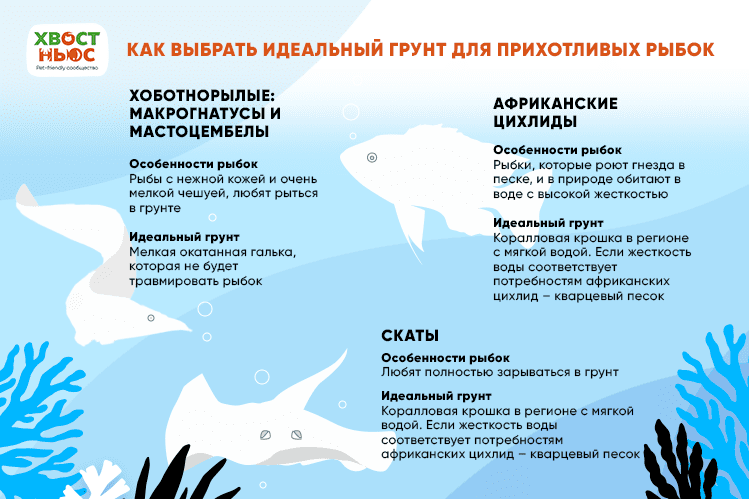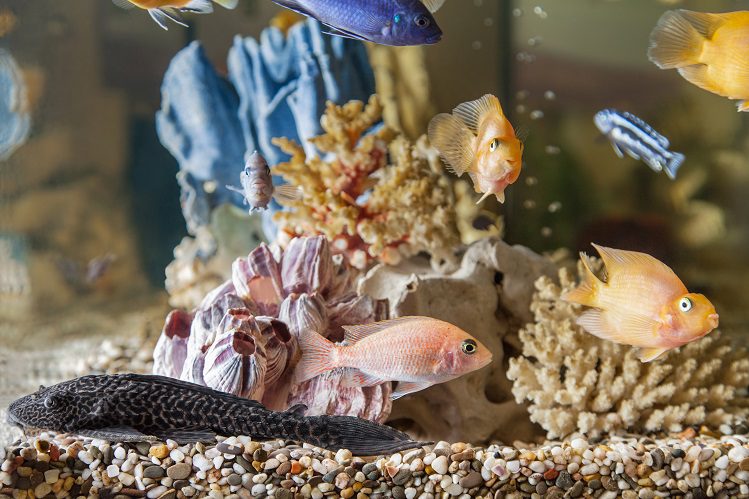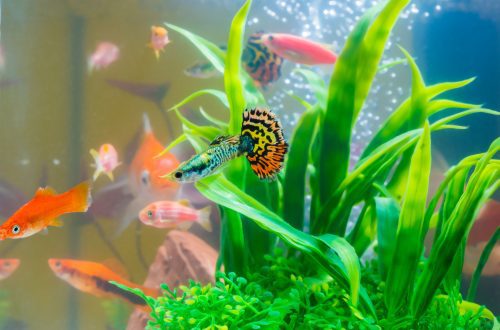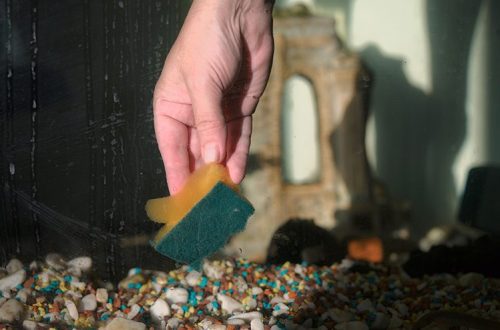
What soil to choose for an aquarium and why is it needed
Vera Dudina, an aquarist with 20 years of experience, tells about safe and beautiful soil for fish and living plants.
A beautiful and stable aquarium is impossible without soil. Soil is the basis of the well-being of the aquarium in every sense. It performs three important functions in the aquarium:
substrate for plants. For their rooting and active growth, there are specific requirements for how to choose and lay the soil correctly.
substrate for bacteria. If there is no external filter in the aquarium, it is the soil that takes on the role of the biofilter. As a result of decay of food residues, dead plants and other organic waste, ammonia is extremely toxic to fish. Bacteria that live in the soil convert it successively into nitrite, and then nitrate, which in small quantities does not harm the inhabitants. In addition, nitrate is essential for the growth of aquarium plants. Its excess is removed during substitutions or with special preparations: Tetra EasyBalance or Tetra NitrateMinus.
An important element of decor. The right color of the soil will emphasize the beauty of the plants, favorably set off the fish.
Unlike fish, plants, decorations and equipment, the soil cannot be replaced after the arrangement. This will mean restarting the aquarium. Therefore, it is important to immediately choose the best option.
Not every substrate is suitable as a soil. Depending on the aquarium where it is selected, the requirements will be different. However, some requirements are common for any soil and for all aquariums:
The soil should not be too large. For aquariums without living plants, a fraction up to 1 cm is suitable. For herbalists – up to 5 mm.
Soil of different fractions should not be used together. In this case, it cakes, stagnant zones are created. This is unsafe for the inhabitants, since hydrogen sulfide accumulates there. In addition, plant roots can rot.
The layer of soil should be at least 1,5 cm for an aquarium without live plants, and at least 5 cm for a herbalist.
The soil should not change the parameters of the water except when necessary. Therefore, it is undesirable to use marble, limestone and coral chips as soil, which significantly increase the hardness and pH of the water.
The ground must be safe. Natural soil needs preliminary thorough washing and disinfection – calcination or boiling. This is a very labor intensive process. The soil purchased at the pet store has undergone the necessary processing. It is enough to rinse it from dust and can be placed in an aquarium.
In addition, some aquarium inhabitants have specific soil requirements due to their individual characteristics. So that you do not make a mistake, I have prepared a memo for you:

Silica sand should not be used as a substrate in aquariums where there are no burrowing fish. It will caking, forming stagnant zones.
Also, quartz sand is not very easy to care for, so you should not choose this type of soil if you are a beginner aquarist.
Be guided by two factors: the soil must perform its function and look aesthetically pleasing. In many ways, the choice will depend on the presence or absence of living plants.
Any neutral substrate is suitable for an aquarium without plants – for example, quartz or pebbles up to 1 cm in diameter. It must be laid out in a layer of 1,5 to 5 cm. The exception is cases when fish with specific requirements live in the aquarium: stingrays, eels, cichlids. We talked about them above.
For an aquarium with live plants, you need not only a basic substrate, but also a nutrient substrate.
As a base, you can use quartz or pebbles up to 5 mm. Ideally 1-2 mm, but not sand. The soil in a planted aquarium should be 100% neutral. Avoid shells, coral chips, sandstone and marble. Artificial porous substrates are also well suited – such as Tetra Active Substrate – this is an excellent substrate for bacteria. It does not cake and does not form stagnant zones, the root system in it actively grows and does not rot. Porous soil is lighter than regular gravel, so at first it may seem somewhat unusual.
Nutrient substrates are laid down under the base soil. They are of two kinds. The former do not contain nitrates and phosphates. They are ideal for beginner aquarists as they will not cause an algae outbreak. One option is Tetra Complete Substrate. For professional herbalists, substrates containing nitrates and phosphates are more commonly used. This is an important nutrient for plants, but their excess leads to the active growth of algae.
As for color, try to avoid variegated colored grounds. They are not dangerous for the inhabitants, but colored spots attract the attention of the observer, and fish and plants are lost against their background.
Bright and light fish looks good on dark ground, it advantageously emphasizes its color. Whereas dark fish, on the contrary, will look good on a light background. In an aquarium with snags, it makes sense to select soil to match the color of snags, and in an aquarium with stones – to match the color of stones, so that the landscape looks like a single whole.

Summing up, I would like to say that the choice of soil is an important stage in the launch of an aquarium, since it is impossible to replace it without disturbing the inhabitants. Therefore, carefully read all the requirements and rules before buying it and before starting the aquarium.
I hope these tips will make aquarium maintenance easier and help you avoid common mistakes. Harmony to you and your fish!





